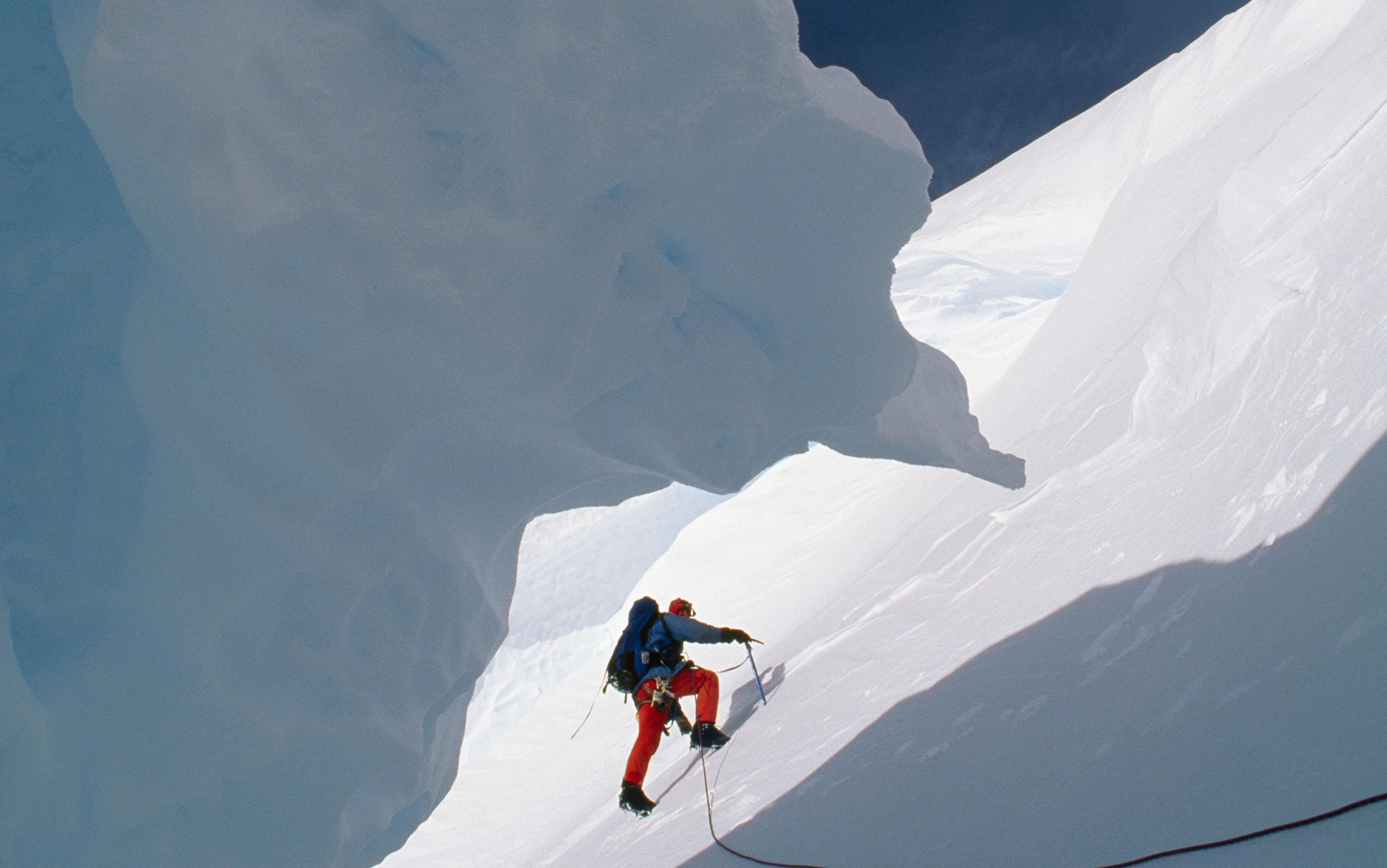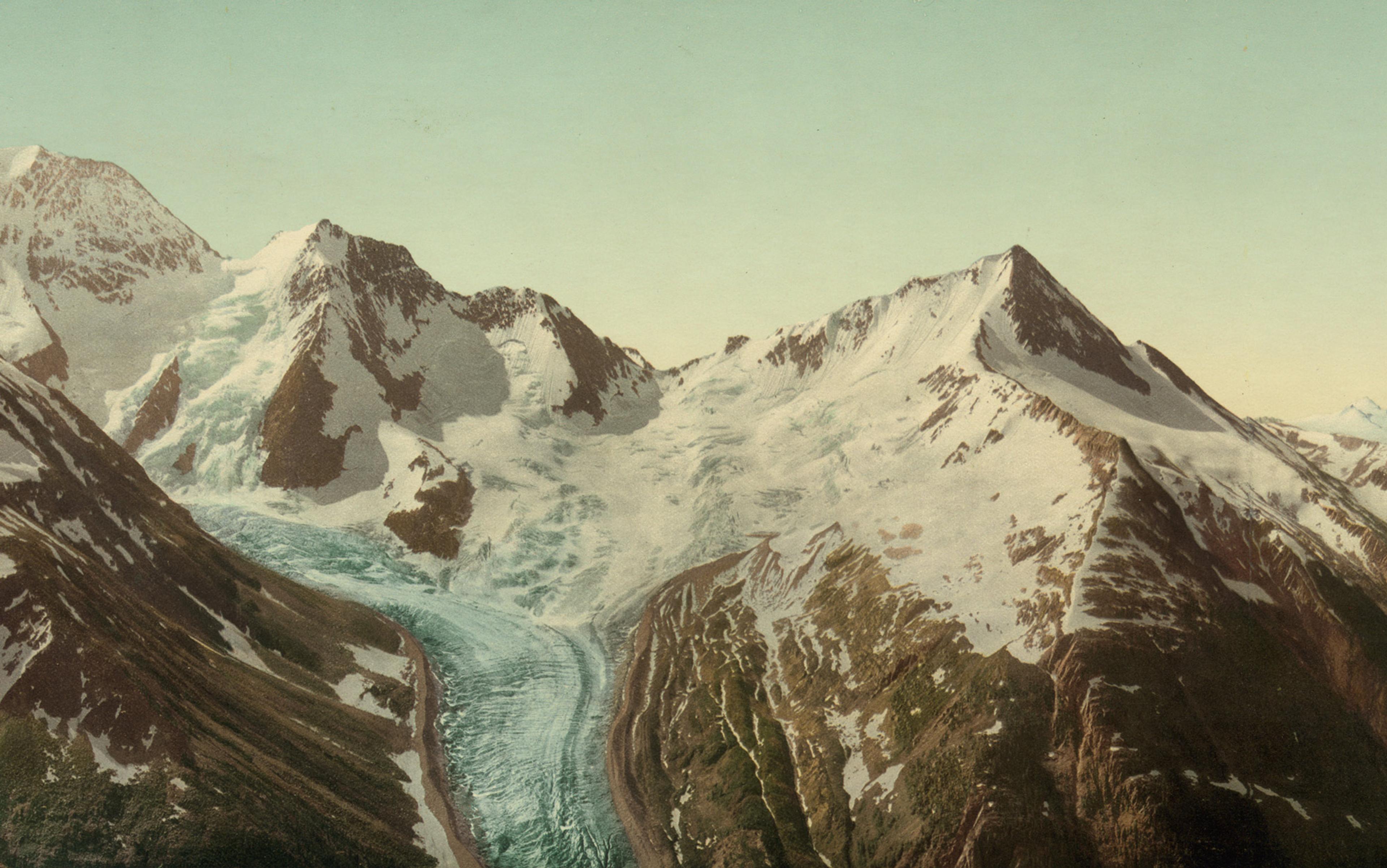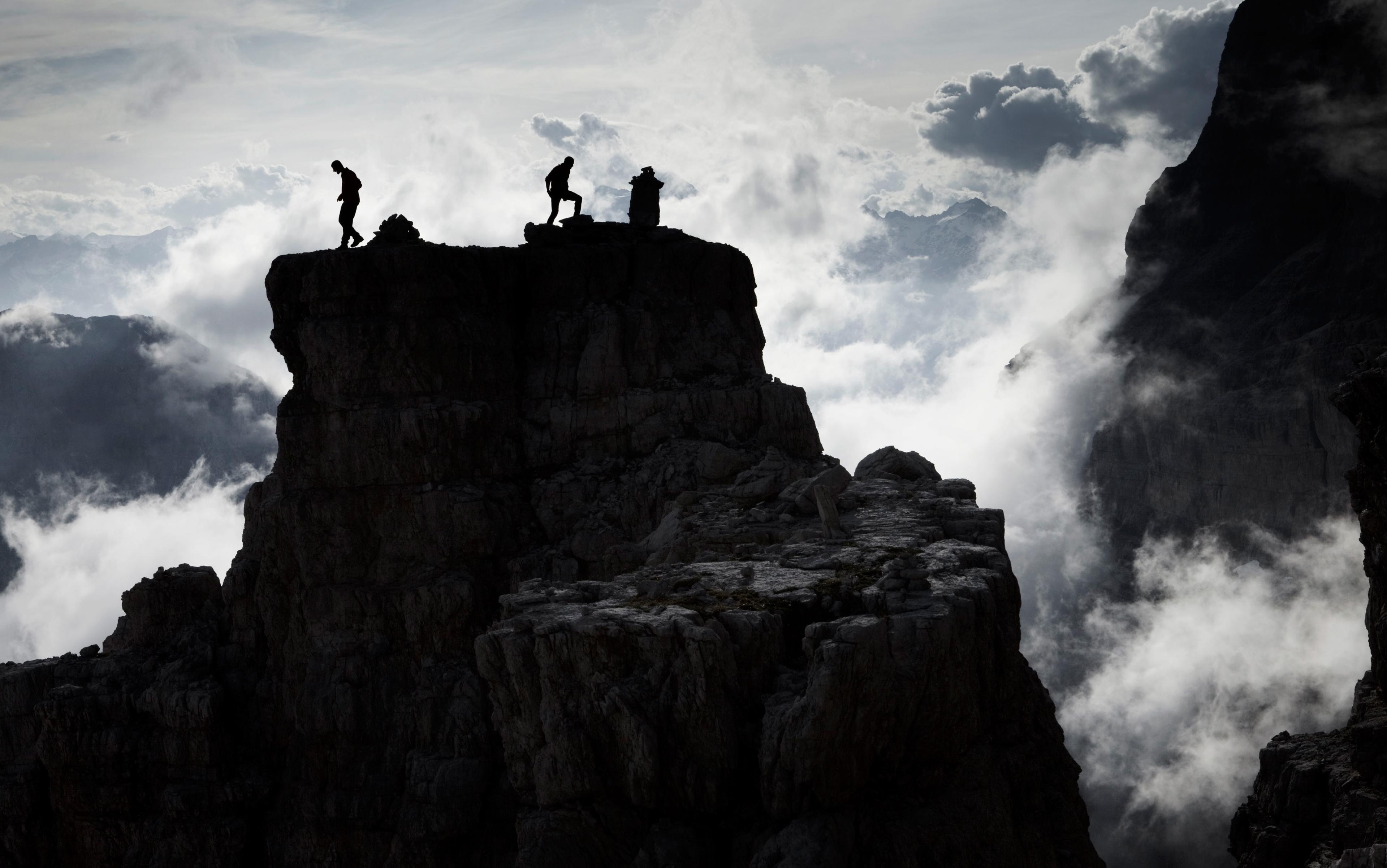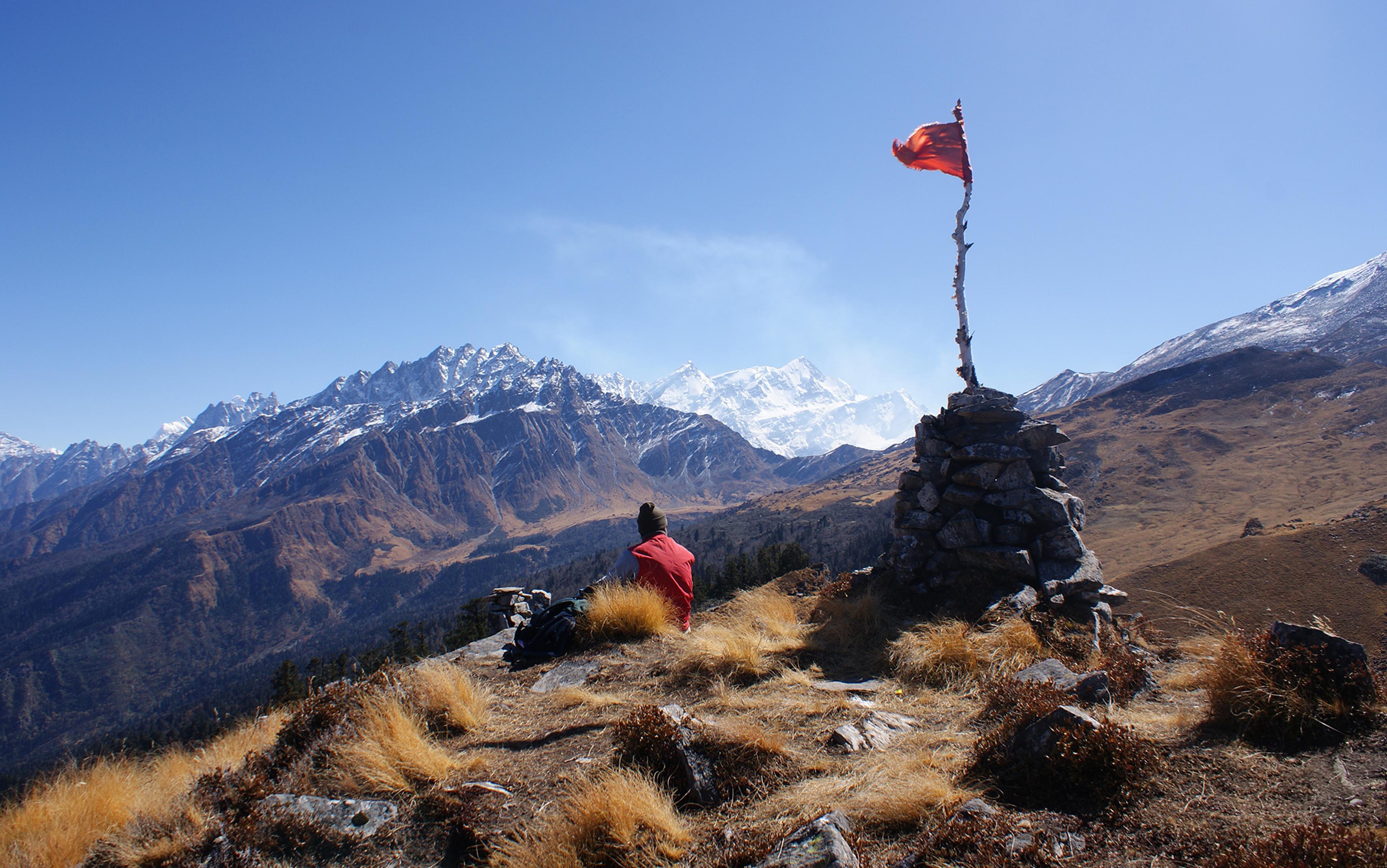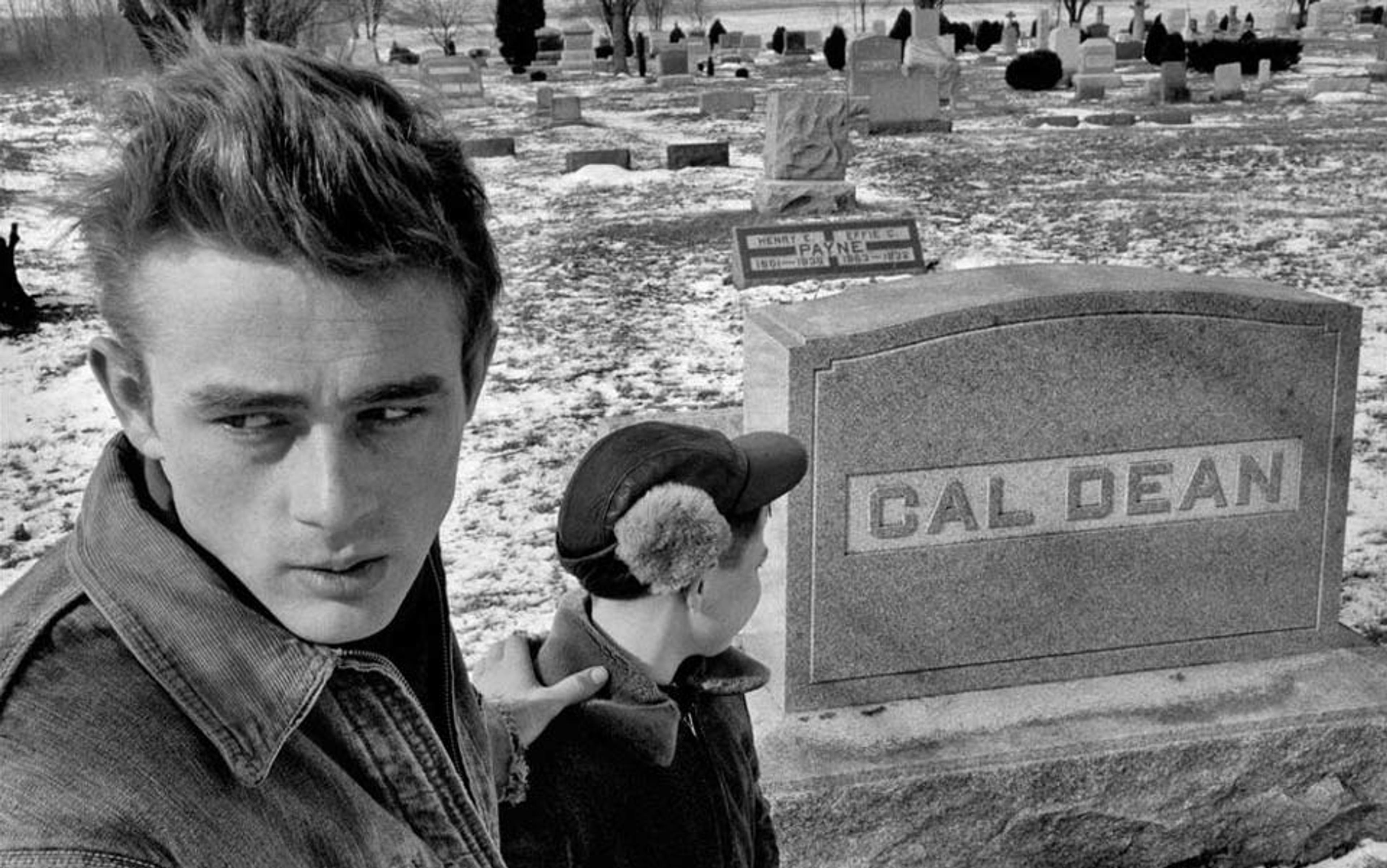When asked in the 1920s why he wanted to climb Mount Everest, George Mallory notoriously quipped: ‘Because it’s there.’ It was a flippant remark, of course, but also an instance of what Friedrich Nietzsche had called ‘superficiality out of profundity’. For Mallory’s retort conveyed the deep human impulse to attempt challenging, dangerous and potentially even deadly endeavours, for no better reason than that one might succeed. Getting to the top of Everest – which has now claimed around 280 lives – is not something that mountaineers do for the fame, fortune or bragging rights. They do it because inside of them there is an impulse that demands that they try. If your response to the idea of standing on the highest point on earth is: ‘Yeah, that would be pretty cool,’ then you have something of that impulse too.
Mallory never summited Everest, dying during the attempt in 1924. In 1953, Edmund Hillary and Tenzing Norgay were the first to pull off the feat. It is now repeated, albeit in far less challenging conditions, by around 500 people each year. Yet despite improved technologies and expert help, it is still an unpleasant, painful and dangerous activity. In 2015 alone, 22 people lost their lives on the mountain, while 1977 was the last year to see no fatalities. In April this year, Ueli Steck – one of the greatest mountaineers of all time – died on Nuptse, a mountain near Everest, the first casualty of the season.
But what kind of activity is climbing Everest, or indeed mountaineering in general? According to the philosopher Bernard Suits, it is a kind of game. In his book The Grasshopper: Games, Life and Utopia (1978), Suits defined a game as ‘a voluntary attempt to overcome unnecessary obstacles’. As he points out, if someone had offered Hillary a trip to the top via a free helicopter ride, he would certainly have declined and stuck to his goal of climbing Everest. For mountaineers, simply getting to the top can’t be the goal, in and of itself. Getting to the top via particular means – and thereby overcoming ‘unnecessary obstacles’ – is what counts. Hence, mountaineering is a game.
Such a conclusion might sit a little uneasily, with the label ‘game’ risking the trivialisation of the endeavour. This is because the stakes involved are so high and the obstacles faced so serious. For, in the mountains, humans are faced with a vast array of mortal threats. There are the risks posed by sudden avalanches, or of being crushed by car-sized blocks of ice and rock, or of tumbling fatally into deep icy crevasses. Then there are the potentially lethal effects of altitude sickness, which can cause deadly swelling of the brain, or the filling of the lungs with fluid until you drown in your own body. Plus frostbite, which can claim fingers, toes, noses and ears, before hypothermia sets in and you freeze to death. All of which is compounded by the fact that mountains attract storms: sudden, violent, pounding winds that can dump many feet of snow with little warning, trapping a climber for days. And if that happens, starvation and fatal dehydration threaten. (In the high mountains, you need to be able to melt ice to have enough water to drink; if you run out of stove gas, you die.)
Perhaps for these reasons mountaineering was described by John Menlove Edwards as ‘a psychoneurotic tendency’ rather than a sport. He probably knew what he was talking about: a psychiatrist as well as one of Britain’s premier early rock climbers, Edwards suffered from what was likely bipolar disorder, and tragically committed suicide in 1958, aged just 48. But putting aside the sanity of the average mountaineer, given the enormous risks associated with the pursuit, to call it a game risks unduly trivialising it. After what Hillary and Norgay put themselves through, if somebody back at base camp jauntily congratulated them on ‘winning the game’, they’d run the risk not just of missing the point, but of being outright offensive – even grotesque.
Yet there is nonetheless something right in Suits’s description of mountaineering as a game. This is due to the way that climbers continuously impose ‘unnecessary obstacles’ upon themselves: the invention and refinement of rules regarding how one is supposed to make it to the top.
Aristotle claimed that man is a political animal. Karl Marx and Friedrich Engels insisted that humans are, at base, creative and labouring creatures. (It was cutting off individuals from the products of their labour that made capitalism not just exploitative, but existentially degrading.) There is plausibility in both views. But we might add a third: that humans are rule-making animals, continuously imposing codes and strictures for a variety of reasons. Some are to do with political control (laws and official regulations), while others are for more nebulous forms of social ordering (rules about gendered clothing, how to interact with strangers, and so on). But some are rules we impose so as to engage in activities that bring us fun, enjoyment and satisfaction, or some complicated mixture of all three and more. For rules allow us to play games, and human beings like to play games – even deadly ones.
As the US writer and mountaineer Jon Krakauer notes in his book Eiger Dreams: Ventures Among Men and Mountains (1990): ‘The sport of mountain climbing is notably lacking in formal governing bodies and official rules. In spite of this – or perhaps because of this – the tight-knit community of established American climbers has always projected a very strong sense of how the game ought to be played.’ And such self-imposed rules are legion. For example, whether climbing up Everest, or a short buttress in England’s Peak District, the prestige for truly ‘sending’ a pitch always goes to the person at ‘the sharp end’: the first one up, who takes the rope along, and hence takes the biggest risks of injury or death if things go wrong.
Indeed, simply reaching a summit is not considered by most mountaineers to count, in and of itself. Anybody can walk to the top of Mount Kilimanjaro if they can hack the altitude, and hence the highest peak in Africa is not considered a proper summit but rather ‘a mere walk-up’ by mountaineers such as David Roberts, author of On the Ridge Between Life and Death: A Climbing Life Reexamined (2005). Similarly Everest herself is sometimes scoffed at as a ‘slag heap’, where the presence of rank amateurs paying $65,000 to be guided along the so-called ‘yak trail’ of fixed ropes means it is frequently disqualified as a worthy summit. Unless, that is, one approaches it not from the popular (‘easy’) south side, but from one of the more difficult – and therefore deadly – angles. By contrast, K2 (the second highest mountain in the world) and Denali (the highest in North America) are peaks that only seriously committed and technically able climbers will manage. Getting to the top of those is recognised as a real achievement – of winning the game.
The established rule is that the most worthy ascents are above 8,000 metres, without supplementary oxygen – ie, ‘the death zone’
Another informal, but very real, rule of mountaineering is that the harder an ascent, the more prestige and respect it deserves. After the collapse of the USSR, Russian climbing expeditions were able to travel to the Himalayas and attempt its intimidating peaks. They caused outrage in the international climbing community, however, by using large quantities of ‘fixed’ ropes to ascend and descend safely, and then leaving many of those ropes behind. This was considered sacrilege by many Western climbers, who viewed fixed ropes as making things too easy (thus negating the challenge of an ascent), while leaving them behind was vandalism to the mountain.
The Russian practice was a legacy of Soviet mountaineering competition rules, which stated that teams were disqualified if any member died – so all teams used fixed ropes at all times, to maximise safety. Russians climbers expressed irritation at the death-inviting attitude of their Western cousins, and the negative judgment towards Russian prudence that went with it. Nonetheless, ‘Russian-style’ ascents are still widely considered inferior to the more dangerous ‘Alpine-style’ summits lauded by Western mountaineers.
And like in other games, the stakes can be upped. It is now an established rule that the hardest, and thereby most worthy, ascents are those done of peaks above 8,000 metres, and without supplementary oxygen. This is a mind-boggling endeavour, as above 8,000 metres the air is too thin to support human life – hence why it is referred to as ‘the death zone’. Only exceptionally strong climbers with years of experience can manage it, and the intrinsically erratic nature of altitude sickness means that even some of them can suddenly find themselves dying, without hope of rescue.
The no-oxygen rule was set in 1975, when Reinhold Messner and Peter Habeler climbed an 8,000-metre neighbour of K2’s called Hidden Peak, ‘Alpine-style’: without bottled oxygen, permanent fixed ropes, a support team or pre-established camps. Pulling off this audacious feat, they promptly declared it ‘climbing by fair means’ – implying that anything less was cheating. The gauntlet has been firmly down ever since. Many of the hundreds of climbers who have died in the Himalayas, the Karakoram and beyond in the years since were attempting to get up ‘by fair means’. Doubtless, at least some would have survived if they’d been playing by laxer rules.
The mountains have long been a powerful but ambiguous presence in human history. As the anthropologist and anarchist political theorist James C Scott explains in his book The Art of Not Being Governed (2009), for thousands of years, mountains represented areas outside of state control: places that dissident populations went to escape authoritative rule, which usually entailed taxation at best, slavery and murder at worst. Rugged and impassable terrain that is quickly shut down by unpredictable weather is the perfect bolt-hole for avoiding the clunking fist of political authority – which is why guerrillas and partisans still prefer highland terrain today.
But the very power and danger of the mountains has also meant that they have long been steeped in superstition. Up there, gods and demons dwell, waiting to unleash pain on those who trespass their lands. Zeus hurled his thunderbolts down from Mount Olympus, after all, while Shiva still resides atop Mount Kailash. As for such a mere mortal as Moses, he first had to ascend Mount Sinai to receive the Ten Commandments directly from God.
Yet the rise of economically advanced European states eventually changed man’s relationship to the mountains. Sophisticated forms of population measurement and control, and the rise of technology that allowed surveying and regulation, as well as the efficient transportation of the state’s agents, meant that the mountains could be cleansed of subversive elements, and converted to more economically productive (from the state’s point of view) purposes. The Highland Clearances of 18th- and 19th-century Scotland represent perhaps the paradigmatic example, when unruly Jacobite-sympathising highlanders were forcibly evicted by the British, and replaced with profit-generating herds of sheep.
When Hillary got a knighthood, Norgay got the George Medal. Imperial glory was carefully tailored to be the white man’s alone
Economic development also led to the rise of an aristocratic leisure class with time on its hands – time that could be dedicated to foolhardy activities such as climbing up dangerous peaks, and imposing self-validating rules in the process. Indeed, the sport of mountaineering is widely considered to have been born on a specific day: 8 August 1786, when the doctor Michel-Gabriel Paccard made the first ascent of Mont Blanc in the French Alps, in the company of a local Chamonix hunter named Jacques Balmat. Yet this neat image of the sport being invented all of a piece conceals the fact that a great deal of social and economic development first needed to come to pass before an activity such as Paccard and Balmat’s was even thinkable, let alone repeatable.
Having opened the mountains to the leisure classes, the modern state wasn’t about to leave things there. On the contrary, the exploits of mountaineers have frequently been hitched to political ends. When Hillary summited Everest in May 1953, this was immediately claimed as a great achievement for the British Empire – word reached the new Queen Elizabeth on the eve of her coronation – and duly hailed as a sign that the British were embarking upon a fresh start after the dark decades of war and austerity. No matter that Hillary was a New Zealander. In a period of acute national anxiety due to Imperial decline, he was British enough. On the other hand, Sherpa Norgay – who saved Hillary’s life during the ascent – was never given anything like the same recognition. When Hillary got a knighthood, Norgay got the George Medal, and for many years his name was barely mentioned in popular accounts of the ascent. Imperial glory was carefully tailored to be the white man’s alone.
In a very different mode, the Soviet Union also tried to harness the power of the mountains to political effect. As well as giving the country’s largest peaks such imaginative names as ‘Lenin’ and ‘Stalin’, after the Second World War the USSR officially designated mountaineering a sport, licensing it for extensive state funding. In doing so, it shifted from a direct military responsibility (where it was used as part of elite troop-training during the Second World War) to a civilian one. Trade-union subsidies for up to 75 per cent of mountaineering expenses made it accessible to a wide range of people, in line with official communist egalitarian ideology. Individual mountaineers who summited the required number of difficult peaks in the approved Soviet fashion could eventually receive the prestigious designation ‘Master of Sport’, and the perks that came with it (not least, more time in the mountains, training the next generation). In part, this was probably an attempt to take back the mountains from their more traditional role as refuges for dissidents and malcontents, while offering structured forms of social progression and controlled outlets for the energies of restless youths. In other words, recruiting mountaineering for purposes of population surveillance and control, under the apparatus of a repressive political regime.
And it seems that, for a while at least, this might have been done with a very particular goal in mind. For the Soviet Union perhaps had designs on Everest: a mountain race, just as the space race was beginning. Looking back through the fog of the Cold War, it is hard to be sure of the facts, but according to a 1953 article in The Manchester Guardian, a failed Soviet expedition the previous year had planned not only to get to the top of the world’s highest peak, but to erect statues of Lenin and Stalin at the summit. Some of this might have been mere hyperbole on behalf of the British paper, but if the Soviets did attempt Everest, failure to achieve the summit would explain why any expedition (if it really did happen) was nonetheless kept secret – the propaganda value of Himalayan expeditions to the Russians would have been dependent upon their success.
As well as having long been bound up with the political, mountaineering is also deeply intertwined with the ethical. This is because, alongside rules of the game about how one gets to the top, there are also expectations about how one treats other players in the process. Yet here controversy reigns. In his nausea-inducing memoir Touching the Void (1988), Joe Simpson recounts how he broke his leg in the Peruvian Andes, and how his partner Simon Yates tried to lower him to safety. In storm conditions, and without a clear path of descent, Simpson was eventually left dangling over a deep crevasse, slowly pulling in Yates with him. In the end, Yates opted to cut the rope to save himself, convinced that he had condemned his friend to certain death. Miraculously, Simpson survived the fall, and then managed to crawl – with a shattered leg – back to base camp (it took him two days and nights, sleeping in makeshift snow holes dug along the way).
When the story first broke, some climbers criticised Yates for his act of self-preservation. A ropemate bond, it has been said, ought to be sacrosanct. Simpson, however, has always maintained that Yates did the right thing – and that he would have done the same if the roles were reversed.
‘There was nothing that they could have done to rescue the [falling] Indians but they could have displayed a shred of compassion’
Similarly, the question of proper conduct in the ‘death zone’ elicits deep disagreement. It is widely accepted that at such altitudes a climber cannot help another in difficulty: any attempt to do so will simply result in both ending up dead. Nonetheless, some believe that human decency must still be preserved, despite the perils of the situation.
Simpson himself has been an outspoken critic of climbers who ignore struggling others, passing them as if they weren’t there. In a later book, The Beckoning Silence (2002), he gives the example of the Japanese team on Everest in 1996 who didn’t acknowledge a pair of failing Indian climbers: ‘There was nothing that they could have done to rescue the Indians but they could have displayed a shred of compassion.’ Against the popular view that above 8,000 metres climbers ‘cannot afford morality’, Simpson rails: ‘When did the means ever justify the end in mountaineering?’ For him, ‘ethics and morality’ are fundamental to the sport. But when it comes to the death zone, many agree with Krakauer, who survived the 1996 Everest disaster that left eight others dead, and who argues in Eiger Dreams that there is ‘so little margin for error that climbers now commonly begin their ascents with the understanding that if things go wrong, the bond between ropemates … may be discarded in favour of a policy of every man for himself’.
But why do climbers engage in this extraordinarily dangerous activity? Fierce rhetoric about conquering the peaks – of imposing man’s will on nature itself – tends not to be how mountaineers themselves see it. For a start, the sheer destructive power of the mountains disabuses most who tussle with them of the illusion that, up there, humans are anything other than temporarily tolerated guests. Second, this gets the aesthetic and ethical relationships all wrong: the beauty and awe of the mountains are to be respected and appreciated, not beaten down.
For most climbers, if there’s something to be conquered, it’s not so much the summit as some aspect of themselves. Fear and physical pain are the things to be overcome; routes and ascents are proxies for challenging oneself, not the terrain. In this game, the true opponent is usually not the mountain, but one’s own personal limitations. As Mallory himself put it: ‘Have we vanquished an enemy? None but ourselves.’ Having said that, it’s also true that mountaineers tend to be a competitive bunch. Being the first to claim an ascent, or the hardest climber at the crag, is not something most are truly indifferent about. Climbers are just as susceptible to the lure of being the best, and the dubious joys of ranking and comparison, as all other athletes.
It takes a privileged form of social ordering to create members willing to dice with death for the challenge
And it’s often a fine line between the profound and the pompous, the sublime and the narcissistic. William Blake was on to something when he wrote: ‘Great things are done when men and mountains meet; This is not done by jostling in the street.’ But Juvenal wasn’t completely wrong either: ‘Go, climb the rugged alps, ambitious fool; To please the boys, and be a theme at school!’ Indeed, the urge to challenge oneself, perhaps to the point of infantile foolishness, can smack of a more existential desperation, to the point of being pitiful. In his much-maligned but widely misunderstood The End of History and the Last Man (1992), Francis Fukuyama singled out mountaineering and rock climbing as evidence that the ‘Last Men’ (and women) of liberal capitalist democracy simply could not sit still and enjoy their peace and prosperity. The need to strive after competitive achievement and personal challenge would draw humans to such activities as they attempted – in vain – to avoid staring into the abyss of pointlessness that was opened up by modern living.
Fukuyama’s diagnosis is melodramatic, but he has a point. It takes a peculiarly privileged form of social ordering to create members who are willing and able to spend their leisure time dicing with death for no better reason than that they enjoy the challenge. And yet, it would be a mistake to make it too much about the men and women who climb, while forgetting what it is that gets climbed. The legendary 19th-century explorer and adventurer John Muir wrote: ‘The mountains are calling and I must go.’ Thousands of people still hear that call, and likewise they must go. Why? Because the mountains are there, of course.
